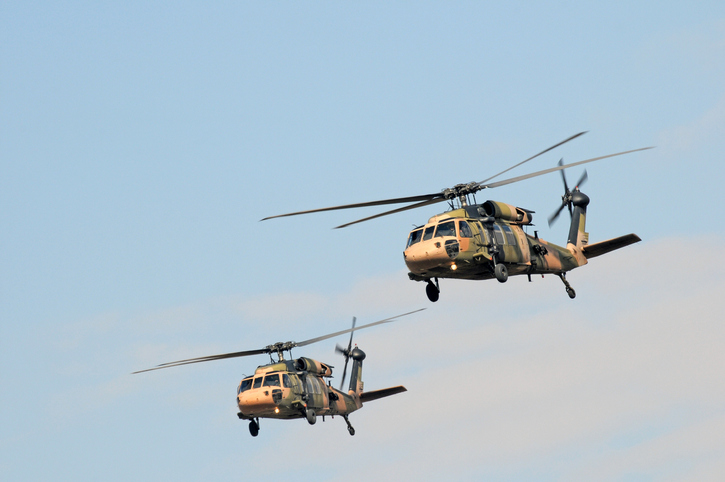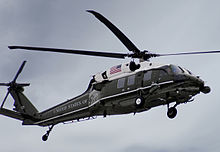Why the Sikorsky S 70 is the Preferred Choice for Modern Helicopter Missions
Why the Sikorsky S 70 is the Preferred Choice for Modern Helicopter Missions
Blog Article
High-Performance Multi-Role Rotorcraft Featuring Advanced Cockpit Technologies and Integrated Sensing Unit Systems
The realm of rotorcraft modern technology has actually seen significant developments in current times, especially in the realm of high-performance multi-role rotorcraft outfitted with advanced cabin innovations and perfectly incorporated sensor systems. In the complying with discussion, we will certainly discover the evolution of rotorcraft technology, delve right into the realm of sophisticated cockpit technologies, and take a look at the effects of integrated sensor systems on the functional flexibility and performance of modern-day rotorcraft.
Development of Rotorcraft Modern Technology
The development of rotorcraft modern technology has been marked by substantial advancements in aerodynamics, materials, and propulsion systems, shaping the capacities and performance of modern-day rotorcraft. In addition, advancements in propulsion systems, consisting of much more effective engines and innovative propulsion modern technologies, have actually allowed rotorcraft to accomplish greater altitudes, faster rates, and better payloads.
These improvements have not just changed the capacities of rotorcraft but have also expanded their applications throughout numerous industries, including army, industrial, and emergency services. The continuous development of rotorcraft technology remains to drive technology in the area, pushing the limits of what is feasible and shaping the future of vertical trip.
Advanced Cabin Innovations
Structure upon the foundational innovations in aerodynamics, materials, and propulsion systems, the realm of rotorcraft technology currently shifts focus in the direction of pioneering Advanced Cabin Innovations. The combination of cutting-edge innovations within the cockpit setting plays a vital duty in improving the operational abilities, security, and performance of contemporary rotorcraft. sikorsky s 70. Advanced Cockpit Innovations include a vast array of features made to give pilots with boosted situational recognition, structured information administration, and user-friendly control interfaces
Among the key innovations in cockpit layout is the execution of glass cockpits, which replace typical analog assesses with high-resolution display screens. These digital systems provide personalized formats, real-time data combination, and improved readability, enabling pilots to access vital information at a glimpse. In addition, advanced avionics systems, such as fly-by-wire controls and boosted reality display screens, are transforming exactly how pilots communicate with the airplane, permitting specific control and enhanced decision-making abilities.


Incorporating advanced cockpit advancements not just improves pilot efficiency however additionally adds to general goal performance and safety in complicated functional atmospheres. By leveraging modern innovations within the cabin, rotorcraft producers are establishing new standards for operational quality and objective success.
Integrated Sensor Systems
With the advancement of rotorcraft modern technology, the combination of advanced Integrated Sensor Solution has ended up being vital in enhancing operational effectiveness and security. These Integrated Sensing unit Systems include a broad variety of innovations that give vital information for numerous features such as navigating, surveillance, targeting, and ecological surveillance. By perfectly incorporating sensors like radars, cams, lidar, and infrared systems right into rotorcraft, operators can take advantage of improved situational understanding, boosted goal capacities, and decreased pilot workload.
One trick benefit of Integrated Sensing unit Systems is their capability to collect real-time data and give workable insights to pilots and goal drivers. For instance, progressed radar systems can find and track targets over fars away, enabling very early hazard detection and reliable feedback planning. Additionally, incorporating electro-optical and infrared electronic cameras enables rotorcraft to conduct reconnaissance and security missions with accuracy and precision.
Fundamentally, the assimilation of cutting-edge sensor technologies into rotorcraft not just boosts operational effectiveness but also contributes substantially to general objective success and staff safety. As rotorcraft continue to evolve, the role of Integrated Sensor Solution will certainly remain at the forefront of innovation in the aerospace sector.
Operational Convenience and Performance
Enhancing functional versatility and performance in rotorcraft is an all-natural progression from the assimilation of innovative Integrated Sensing unit Solutions. By leveraging the data and insights given by these innovative sensing unit systems, rotorcraft can optimize their efficiency across various goals and environments.
Operational convenience includes the ability of rotorcraft to adapt to different duties and situations successfully. With advanced cabin modern technologies and integrated sensing unit systems, rotorcraft can effortlessly shift between tasks such as search and rescue, clinical discharge, surveillance, and much more. This flexibility boosts the rotorcraft's capability to satisfy diverse functional requirements without requiring considerable reconfiguration.
Effectiveness in rotorcraft procedures is essential for maximizing objective performance and resource use. Integrated sensing unit systems play a critical duty in enhancing operational efficiency by giving real-time data on climate condition, surface Learn More Here mapping, target tracking, and a lot more. This information enables pilots to make informed choices promptly, optimize flight courses, learn the facts here now save gas, and boost overall objective productivity.
Impact on Modern Aviation Workflow

Moreover, the integration of innovative sensors helps with improved objective preparation and execution, enabling rotorcraft to perform a large range of tasks with improved precision. From search and rescue operations to aerial firefighting and police objectives, the capacities of modern-day rotorcraft furnished with innovative cockpit innovations and integrated sensor systems are unmatched.
Furthermore, the effect of these advancements extends past operational performance to cost-effectiveness and sustainability. By optimizing flight courses, gas consumption, and upkeep timetables, high-performance rotorcraft furnished with sophisticated cabin modern technologies and sensing units add to lowering operational costs and environmental influence, making them important properties in contemporary aviation operations.
Verdict
To conclude, the high-performance multi-role rotorcraft with innovative cockpit innovations and integrated sensor systems represents a significant evolution in aviation innovation. These advancements boost operational flexibility and effectiveness, eventually affecting modern aeronautics operations in a positive method. The assimilation of these innovative technologies enables improved capabilities and efficiency in numerous goal circumstances, showcasing the proceeded advancement of rotorcraft modern technology in the aeronautics market.
The realm of rotorcraft modern technology has actually seen remarkable innovations in current times, especially in the world of high-performance multi-role rotorcraft furnished with innovative cockpit technologies and seamlessly integrated sensing unit systems. From boosted objective versatility to improved functional performance, the merging of advanced cabin modern technologies and integrated sensor systems has ushered in a brand-new era of possibilities for rotorcraft applications. In the adhering to discussion, we will discover the development of rotorcraft my website innovation, delve right into the realm of innovative cabin technologies, and analyze the implications of integrated sensor systems on the functional flexibility and efficiency of contemporary rotorcraft.

Report this page